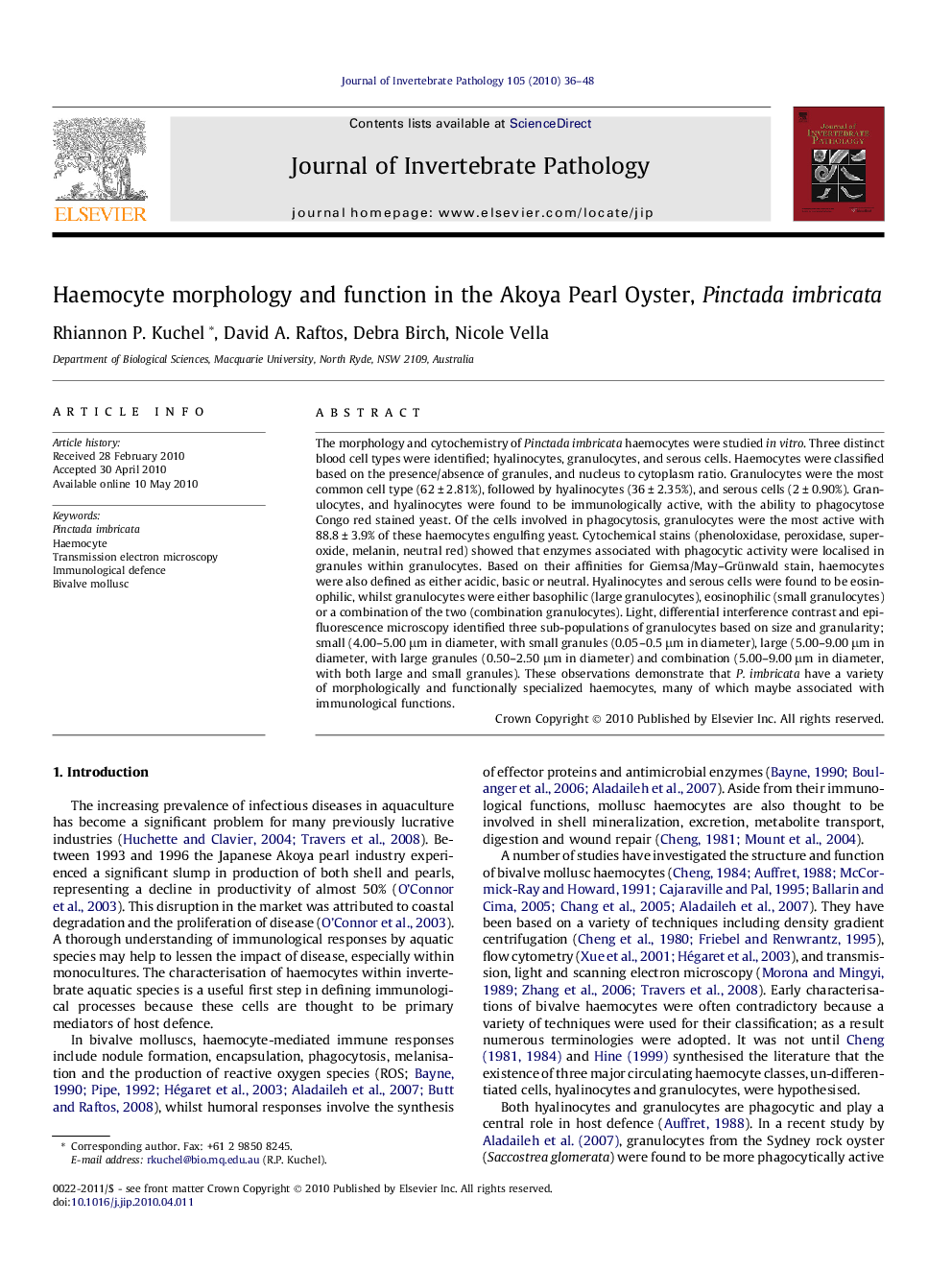| Article ID | Journal | Published Year | Pages | File Type |
|---|---|---|---|---|
| 4558269 | Journal of Invertebrate Pathology | 2010 | 13 Pages |
The morphology and cytochemistry of Pinctada imbricata haemocytes were studied in vitro. Three distinct blood cell types were identified; hyalinocytes, granulocytes, and serous cells. Haemocytes were classified based on the presence/absence of granules, and nucleus to cytoplasm ratio. Granulocytes were the most common cell type (62 ± 2.81%), followed by hyalinocytes (36 ± 2.35%), and serous cells (2 ± 0.90%). Granulocytes, and hyalinocytes were found to be immunologically active, with the ability to phagocytose Congo red stained yeast. Of the cells involved in phagocytosis, granulocytes were the most active with 88.8 ± 3.9% of these haemocytes engulfing yeast. Cytochemical stains (phenoloxidase, peroxidase, superoxide, melanin, neutral red) showed that enzymes associated with phagocytic activity were localised in granules within granulocytes. Based on their affinities for Giemsa/May–Grünwald stain, haemocytes were also defined as either acidic, basic or neutral. Hyalinocytes and serous cells were found to be eosinophilic, whilst granulocytes were either basophilic (large granulocytes), eosinophilic (small granulocytes) or a combination of the two (combination granulocytes). Light, differential interference contrast and epi-fluorescence microscopy identified three sub-populations of granulocytes based on size and granularity; small (4.00–5.00 μm in diameter, with small granules (0.05–0.5 μm in diameter), large (5.00–9.00 μm in diameter, with large granules (0.50–2.50 μm in diameter) and combination (5.00–9.00 μm in diameter, with both large and small granules). These observations demonstrate that P. imbricata have a variety of morphologically and functionally specialized haemocytes, many of which maybe associated with immunological functions.
